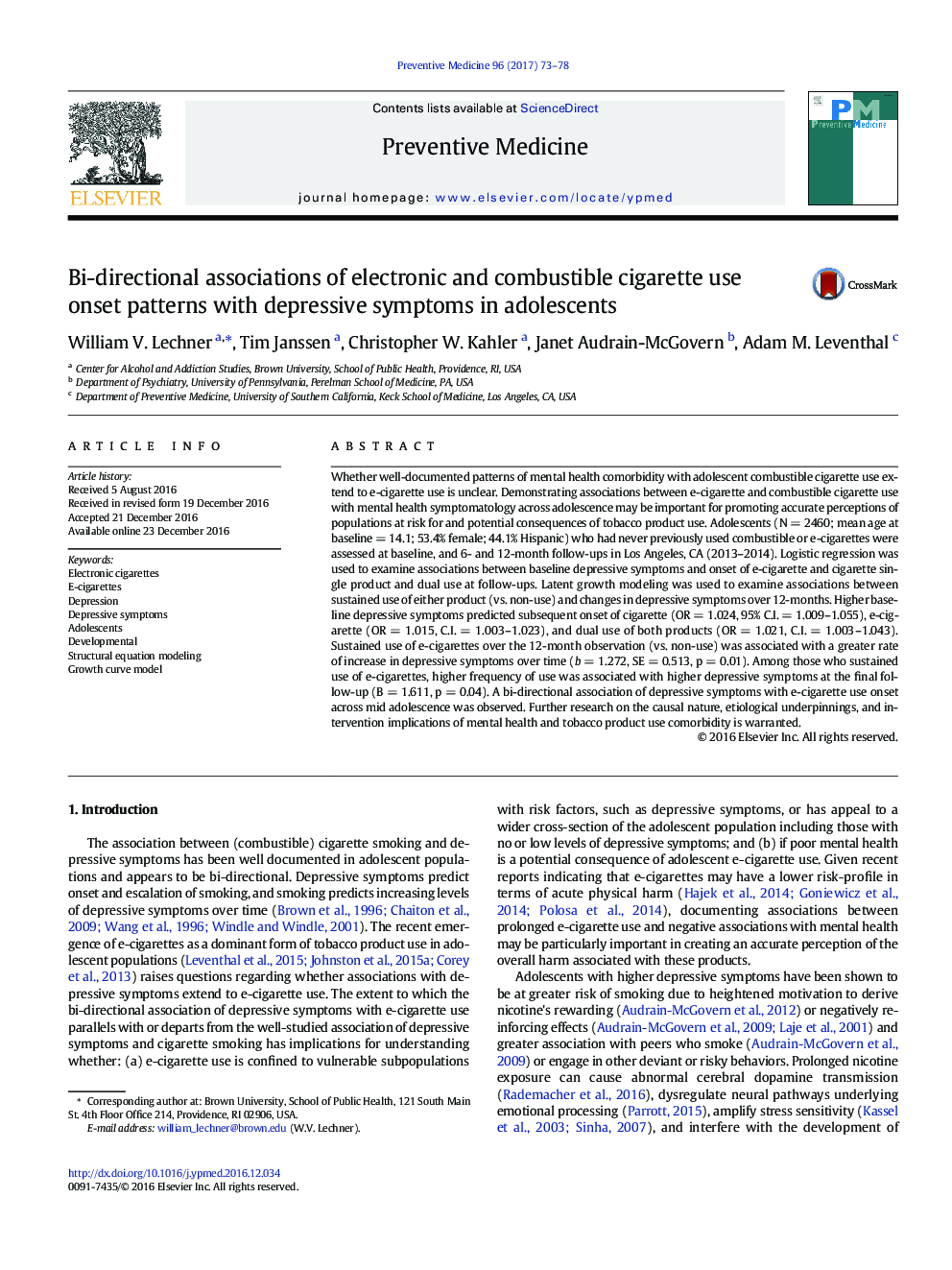| Article ID | Journal | Published Year | Pages | File Type |
|---|---|---|---|---|
| 5635712 | Preventive Medicine | 2017 | 6 Pages |
Abstract
Whether well-documented patterns of mental health comorbidity with adolescent combustible cigarette use extend to e-cigarette use is unclear. Demonstrating associations between e-cigarette and combustible cigarette use with mental health symptomatology across adolescence may be important for promoting accurate perceptions of populations at risk for and potential consequences of tobacco product use. Adolescents (N = 2460; mean age at baseline = 14.1; 53.4% female; 44.1% Hispanic) who had never previously used combustible or e-cigarettes were assessed at baseline, and 6- and 12-month follow-ups in Los Angeles, CA (2013-2014). Logistic regression was used to examine associations between baseline depressive symptoms and onset of e-cigarette and cigarette single product and dual use at follow-ups. Latent growth modeling was used to examine associations between sustained use of either product (vs. non-use) and changes in depressive symptoms over 12-months. Higher baseline depressive symptoms predicted subsequent onset of cigarette (OR = 1.024, 95% C.I. = 1.009-1.055), e-cigarette (OR = 1.015, C.I. = 1.003-1.023), and dual use of both products (OR = 1.021, C.I. = 1.003-1.043). Sustained use of e-cigarettes over the 12-month observation (vs. non-use) was associated with a greater rate of increase in depressive symptoms over time (b = 1.272, SE = 0.513, p = 0.01). Among those who sustained use of e-cigarettes, higher frequency of use was associated with higher depressive symptoms at the final follow-up (B = 1.611, p = 0.04). A bi-directional association of depressive symptoms with e-cigarette use onset across mid adolescence was observed. Further research on the causal nature, etiological underpinnings, and intervention implications of mental health and tobacco product use comorbidity is warranted.
Keywords
Related Topics
Health Sciences
Medicine and Dentistry
Complementary and Alternative Medicine
Authors
William V. Lechner, Tim Janssen, Christopher W. Kahler, Janet Audrain-McGovern, Adam M. Leventhal,
